TEAM BUILDING IN QUY NHON
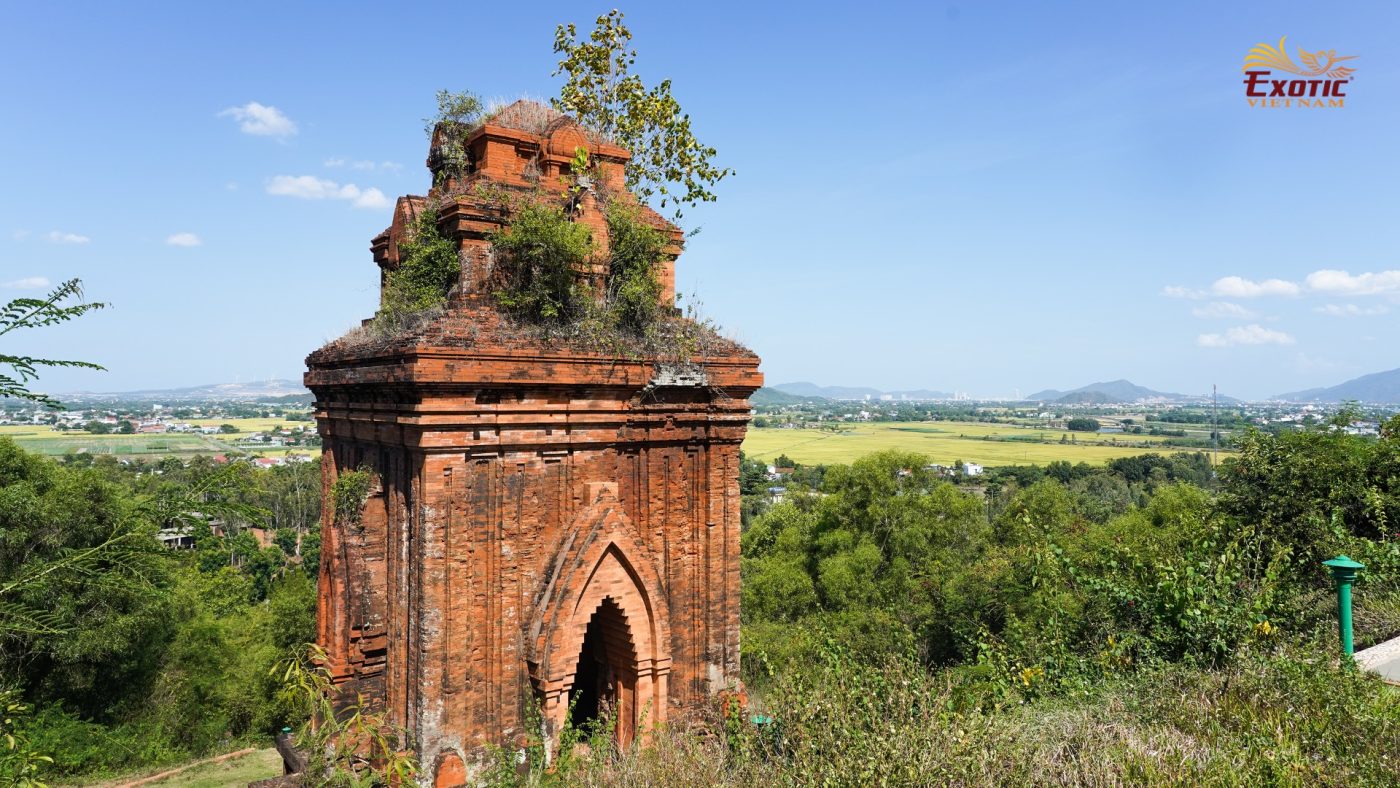
Location: 690km north of HCM City (1 hour by plane or 12 hours by train), 170km from Pleiku (3 hours by car), 240km from Nha Trang (4½ hours by car), 300km from Da Nang (6 hours by car).
Introduction: Quy Nhon is the capital of Binh Dinh Province which lies right in the middle of Central Viet Nam. Visitors will have a chance to witness the local traditional martial spirit and the famous Sa Huynh civilization dating back to the first millennium BC. Moreover, they will explore remnants of fascinating Cham culture and then revisit to the splendid Cham Kingdom which developed in the region of Vijaya during the period from the late 10th century to the late 15th century. The survival of temples and towers marked its golden history. The variety of sculptures carved from sandstone to decorate the towers of Duong Long, Banh It, Canh Tien, etc. together with the varied motifs carved into brick walls give Cham monuments subtle beauty.
Highlights: Quang Trung Museum, Ky Co Beach, Xanh Islet, Duong Long Towers, Doi Towers, Banh It Towesr, Canh Tien Tower & Vijaya Citadel.
Facilities & services: martial art show, diving, world class hotels and restaurants.
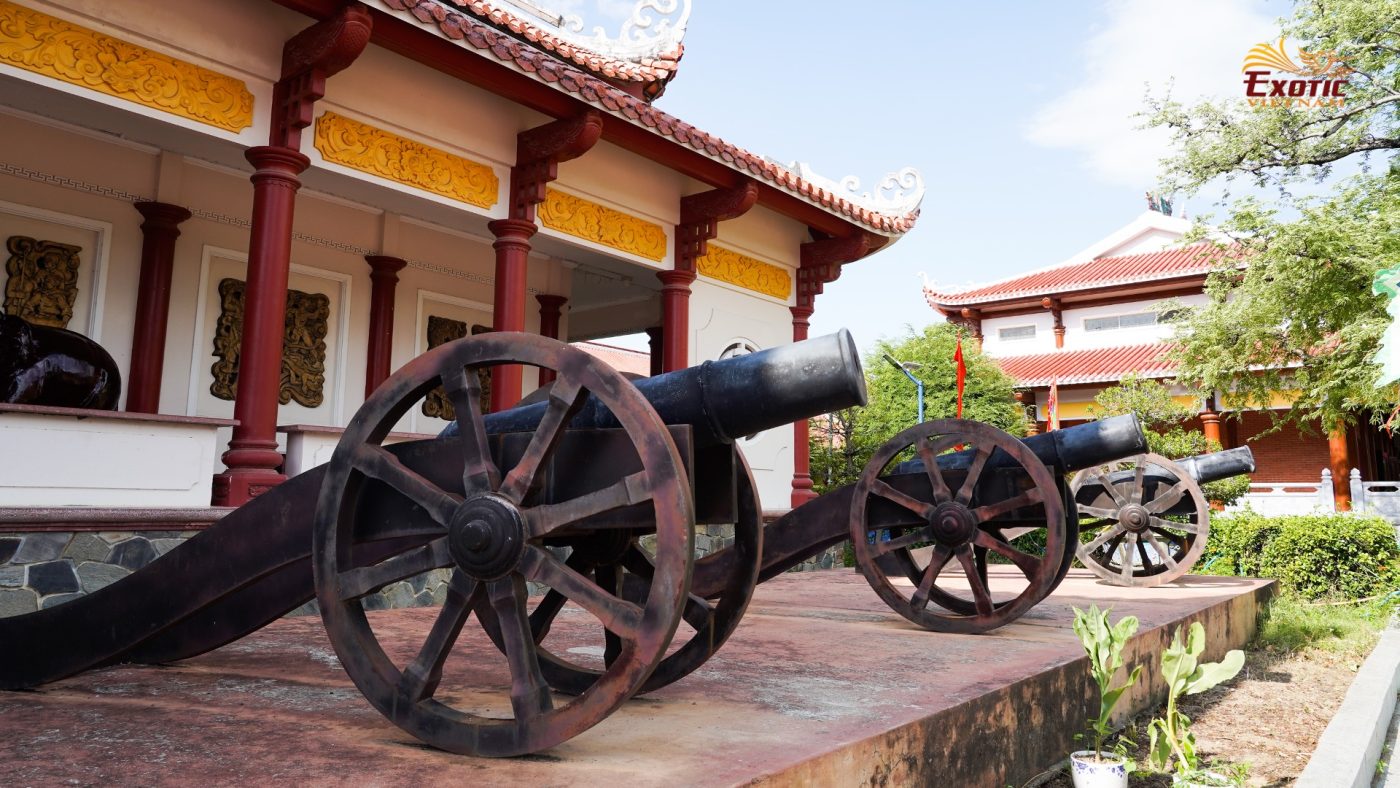
Quang Trung Museum
Quang Trung Museum is dedicated to Nguyen Hue, a national hero of the 18th century. Nguyen Hue was one of the three Tay Son brothers, who led the Tay Son Instruction in 1788 to defeat the Qing invaders and became King Quang Trung in the same year. The museum was built in 1979 in Nguyen Hue homeland in Tay Son District, 45km from Quy Nhon City. Visiting the museum, tourists will enjoy Tay Son martial art demonstrations. Once a year, on the 5th of the lunar 1st month, Dong Da Festival is hold in this museum to memorize the Nguyen Hue’s glorious victory.
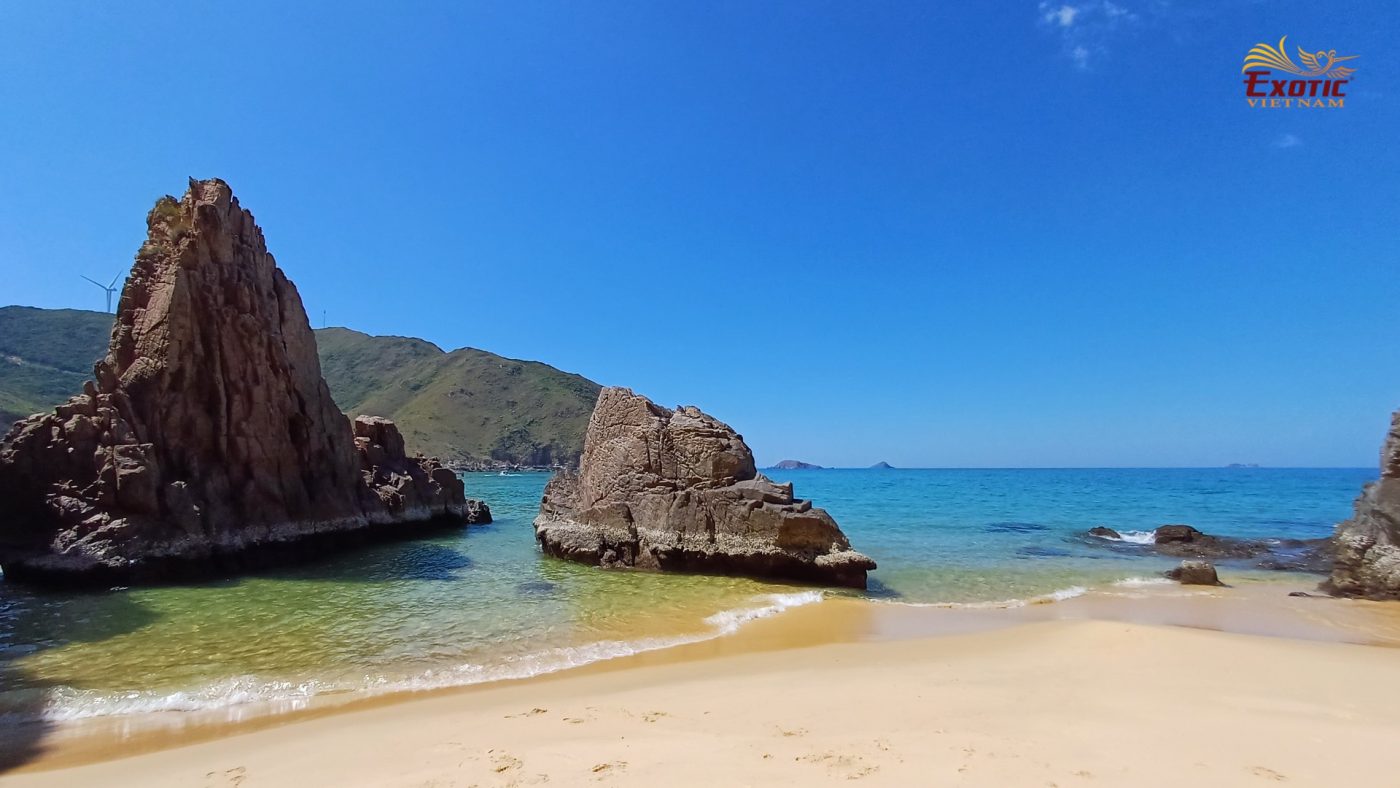
Ky Co Beach
Starting from Eo Gio, 25km northeast of Quy Nhon, visitor can take a 20-minute boat ride or enjoy a shuttle tram driving on zigzag winding mountain road (6km) with the spectacular panorama of village and ocean to get Ky Co Beach. Located on the eastern edge of Phuong Mai Peninsula, Ky Co is a crescent-shaped sandy beach stretching 500m long and 80 wide with 3 sides leaning against high cliffs. The large cracked granite blocks naturally make up amazing pools and gorgeous caves as the tide recedes. Crystal clear turquoise water, smooth white sand, magnificent rock formations of all shapes and sizes in harmony with the clear blue sky give Ky Co Beach vivid colors like a great natural picture. That is why people call it “the Maldives of Viet Nam”. There is nothing more wonderful than swimming, participating in water sports and enjoying fresh seafood with family, friends and colleagues while immersing in nature and relaxing your mind. From Ky Co Beach, visitor can rent a canoe to explore the coral at Bai Dua, Hon Kho or Hon Sao islets nearby. The best time to visit Ky Co is from April to September.
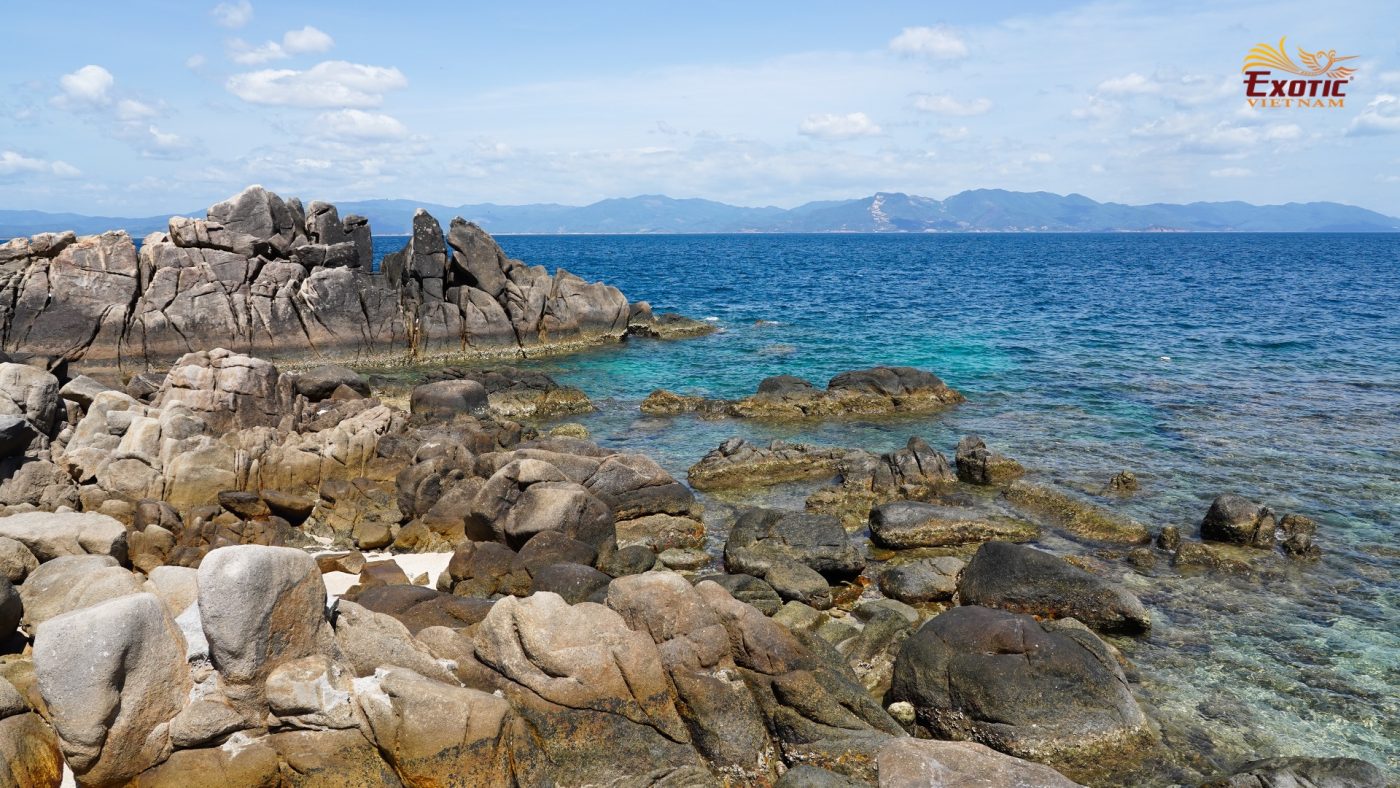
Xanh Islet
About 22km from Quy Nhon City and 6km from Song Cau Town, Xanh Islet (Cu lao Xanh) is also known as Van Phi Islet. Its administrative boundary belongs to Nhon Chau commune, Quy Nhon City, but its geographical distance is closer to Song Cau Town, Phu Yen Province. There are many ways to access Cu Lao Xanh, including hiring fishermen’s boats (30 minutes by boat) in Vinh Hoa Village, Song Cau Town, or at Ham Tu Wharf, Quy Nhon City (30 minutes by canoe, 2 hours by boat). The island has an area of 365 hectares and a population of around 2,300 consisting of three villages. Surrounded by the island, many magnificent beaches (Bai Nam, Bai Bac, Bai Nhỏ) are ideal places for those who indulge into blue crystal water and snorkel to explore colorful coral reefs. Moreover, nothing is greater than climbing up to the visit a 129-year-old lighthouse to take in the panoramic view of the whole island. Build on the hilltop of 120m, this 19-meter lighthouse was built in 1890 by French. There also are lots of spots on the island for you to take photos, get insight into the idyllic life of the locals, and enjoy fresh seasonal seafood. The best time to visit Xanh Islet is from April to September.
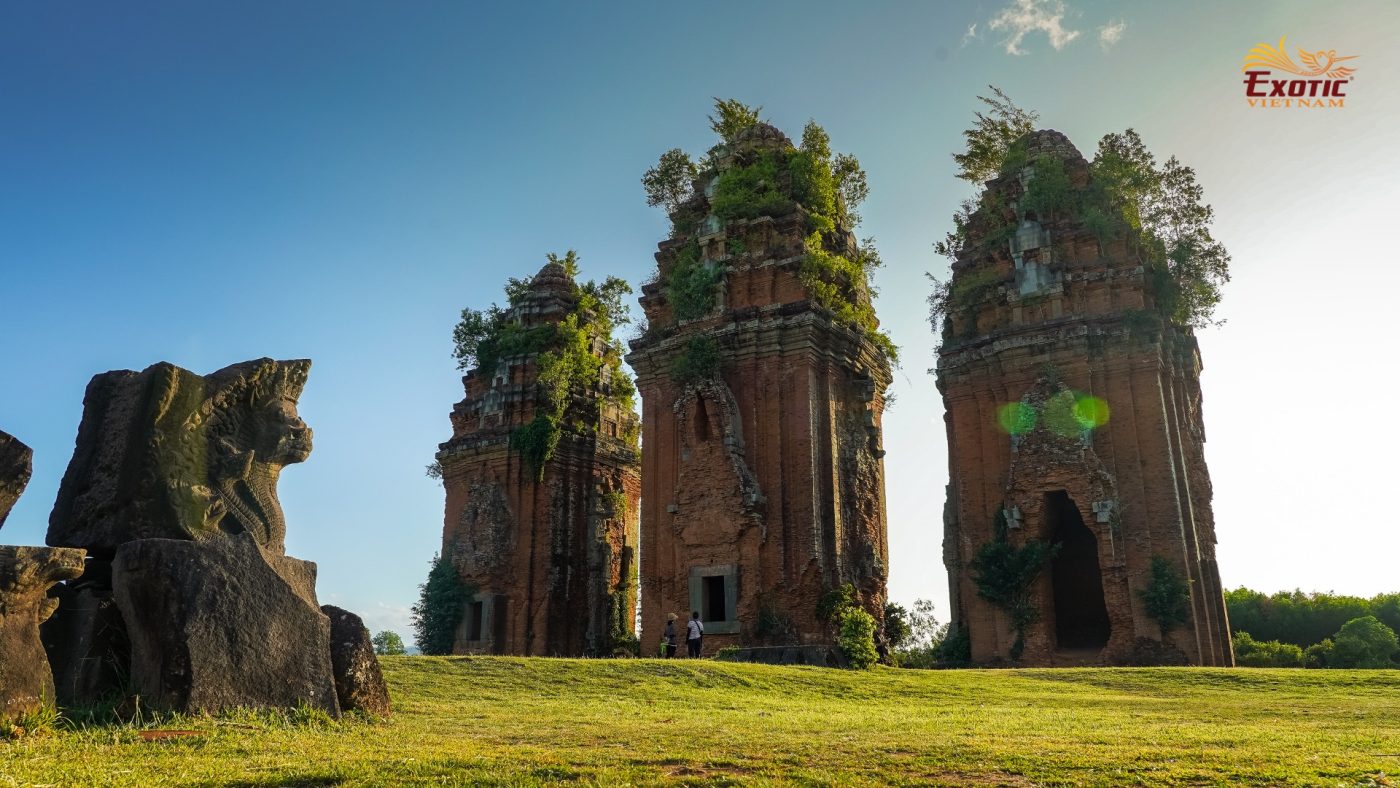
Duong Long Towers
Located 36km from Quy Nhon City, Duong Long Towers consist of three spires: the one in the central is 40 meters high while the two on the side are 38 meters high. From a distance the towers look alike a giant bamboo bud. The brick towers were decorated in different decoration with sandstone ornamentation of elephants, bas-reliefs of dancers, standing lions, monsters and various other animals.
Built in the 13th century & named by the French as Tour d’Ivoire which means Ivory Towers, the Duong Long Towers were designed in Khmer style. All are of a similar design, though the details differ. Each tower has a square base which was originally ringed with a considerable quantity of carved stone, much of which is now stacked in a row by conservators elsewhere on site. From the bases, each tower rises skyward on a series of brick pilasters interrupted by three false doorways and one true doorway, each facing east. The central tower originally included a long projecting porch which collapsed in centuries past. The upper levels of each tower comprise four diminishing tiers of roofs with ornamental gateways facing the four directions. A circular lotus-blossom motif forms the crown of each tower.
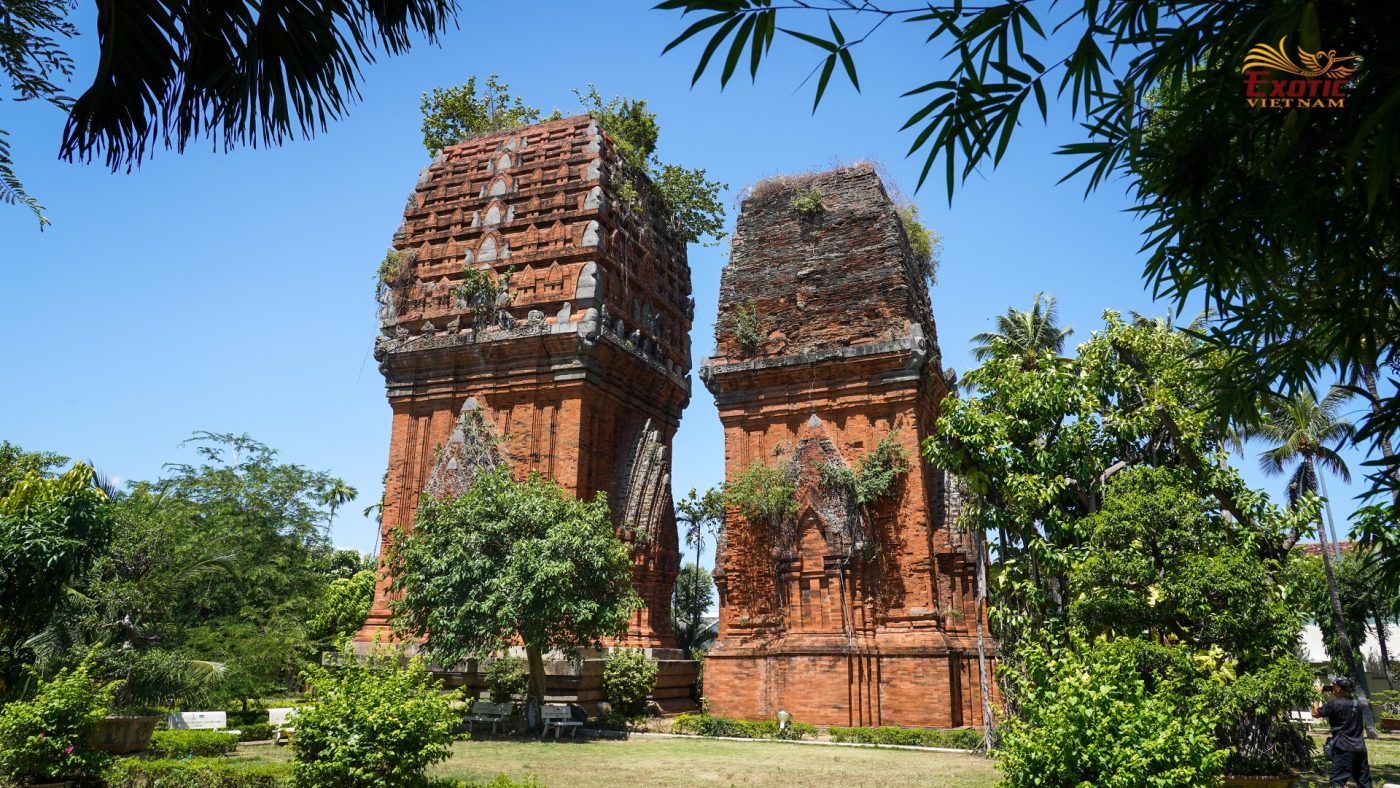
Doi Towers
Within walking distance from the city centre, Doi towers were built in the 12th century and restored in 1996. The towers had a pyramid shape with two towers: one is 18m high and another is 22m. Each tower is square in the middle and curved on the top. It was decorated with false doors and pillars. Affected by Khmer architecture, the tower is made of stone and carved with dancing monkeys, sphinxes, etc. The central tower’s interior now houses a large lingam-yoni, however, it is not an original element. Inside, the towers taper upwards for 20 metres, like giant red brick chimneys, before opening to the sky. Tower structure is quite unique, especially the techniques of stacking and connecting rocks together strongly.

Banh It Towers
The French called this cluster of towers “Silver Tower”. The complex of Banh It towers consists of four towers: the Main temple (Kalan), the Gate tower (Gopura), the Fire tower (Kosagrha) and the Stele tower (Posah). Based on the remaining ruins, researchers believe that the number of architecture here is even more, creating a complete religious center with many different types of architecture.
According to recorded history, Banh It towers date from the late 11th – early 12th centuries. The towers belong to the transitional style from My Son A1 style to Binh Dinh style.
The Main Tower is located on the top of the hill, this is the largest building with a height of 29.6m with a square plan, each side is 12m long, there is a main door in the East and three false doors. The main gate was built protruding from the tower wall by 2m, the arch of the door was shaped like a spear, in the middle of the arch there was a relief of the Kala face. The dome frill is a bas-relief of the dancing monkey god Hanuman. In the false doors that protrude less, the dome fringes are created with Gajasimha reliefs.
The Fire Tower is located to the west of the Stele tower, next to the Main tower, 10m high, 12m long, 5m wide, 1.4m wall thickness. This is an architecture that functions as a warehouse, where the ancient Champa people placed sacrifices.
Inside today’s worship tower is a statue of Shiva, which is a replica of the original statue once placed in the tower (currently the original statue is in the Guimet Museum, France). In addition, this museum also displays a set of metal lingam-yoni from Banh It towers.
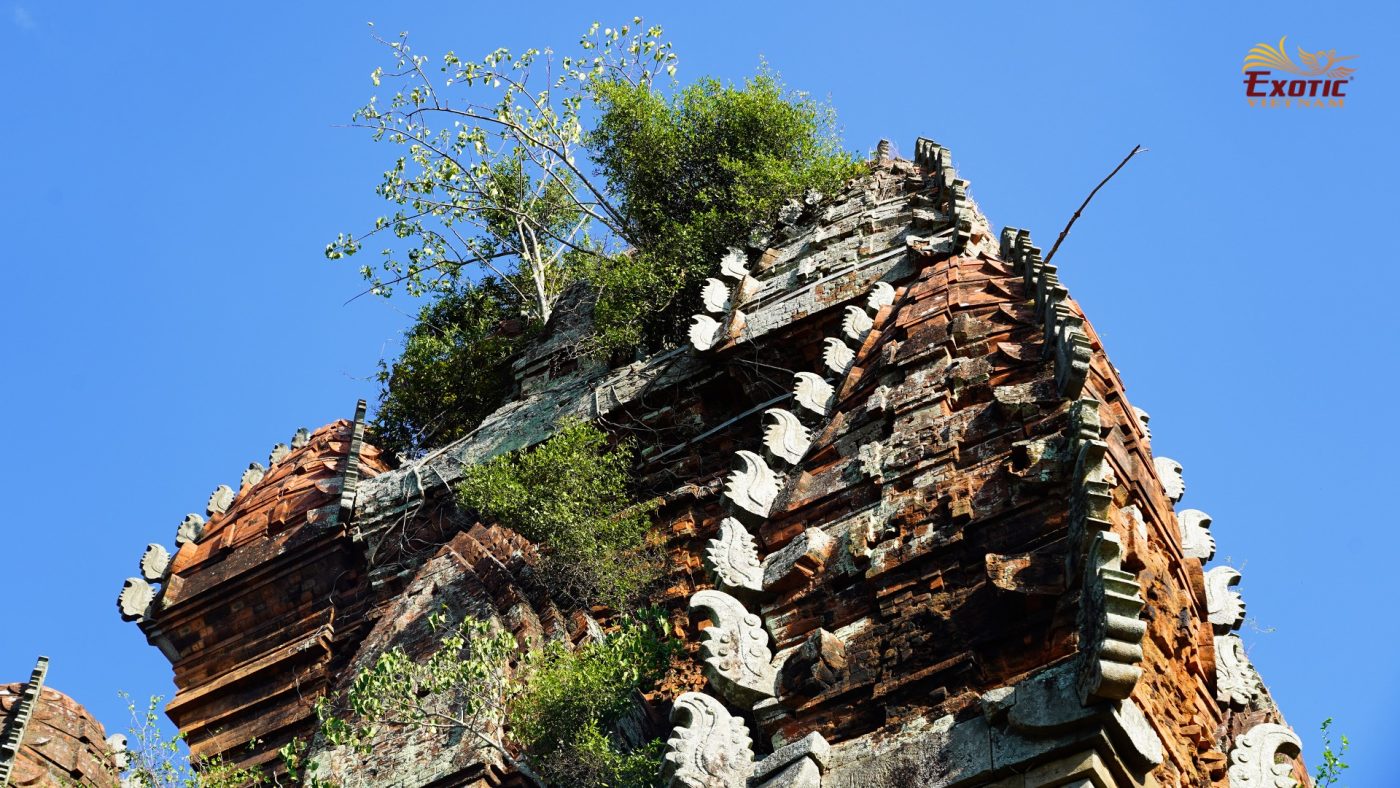
Canh Tien Tower & Vijaya Citadel
About 25km northwest of Quy Nhon City, the Vijaya Citadel (also known Do Ban, Cha Ban, and Hoang De) was once a prosperous city. Served as the Cham capital for 500 years, from the late 10th century until 1471, Vijaya suffered many attacks from the Vietnamese, Khmers, Siamese and Mongols.
Sadly, little remains of Vijaya can be seen. There are only a few relics like laterite ramparts, two stone elephants, three stone lions, square wells and Thap Thap mound, which was possibly the royal garden of Cham kings, now is Thap Thap Pagoda. Most of what is visible today are remains from Tay Son Dynasty when General Nguyen Nhac commanded the building of “Hoang De Citadel” on the same foundations. Soon after, the citadel was taken over by the Nguyen Dynasty and eventually destroyed to rebuild further south.
While there isn’t much to see, the rich history of the site makes it a worthwhile stop. Not far away, you can find Canh Tien tower. Normally, Champa-style towers have a group of 3 towers but Canh Tien has only one. Dating back to the 12th century, the special feature of Canh Tien tower is that the inner part of the wall columns is covered with sandstone slabs carved with twisted rope patterns. The tower is elegantly designed but dignified, the tower has 4 floors that are miniature to the top, each floor has 4 decorative corner towers, each corner has small floors, creating the shape of leaves turning smaller and smaller to create a sense of harmony. It feels like a bird’s wings are flying, from the shoulder of the tower upwards, all four sides are like the wings of a fairy flying up, so it is called Canh Tien tower.
